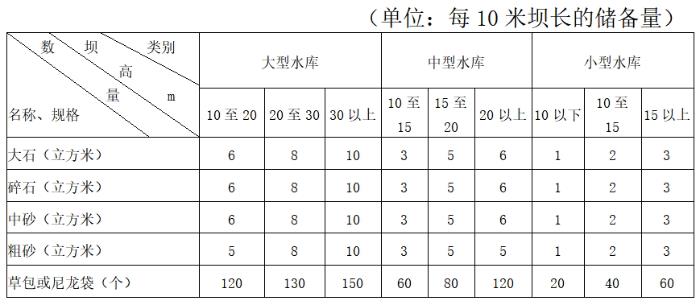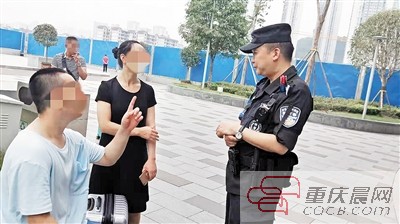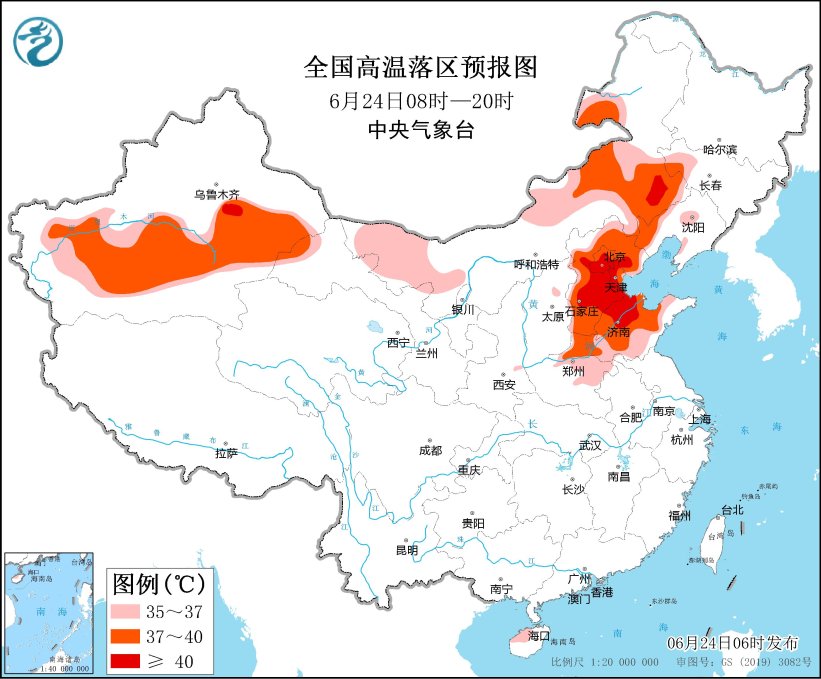Detailed rules for the implementation of reservoir dam safety management in Guangdong Province
(Promulgated by Guangdong Government [1994] No.9 on January 18, 1994, first revised according to Order No.242 of Guangdong People’s Government on July 20, 2017, and second revised according to Order No.251 of Guangdong Provincial People’s Government on January 23, 2018)
the first In order to strengthen the safety management of reservoir dams (hereinafter referred to as dams) and ensure the safety of people’s lives and property, according to the Regulations of the State Council on the Safety Management of Reservoir Dams (hereinafter referred to as the Regulations), combined with the actual situation in our province, these detailed rules are formulated.
the second These rules apply to dams with a dam height of more than 15 meters or a reservoir capacity of more than 1 million cubic meters in this province.
Dams include permanent water retaining structures, flood discharge, water conveyance and ship passing structures matched with them, and power plants and other buildings connected with the dam body.
Dam height below 15 meters, more than 10 meters or storage capacity below 1 million cubic meters, more than 100,000 cubic meters, which is potentially dangerous to the safety of important towns, traffic trunk lines, important military facilities and industrial and mining areas, shall be managed with reference to these rules.
Article The preliminary design documents for dam expansion, reconstruction and reinforcement must be compiled by qualified units in accordance with the technical management procedures formulated by the relevant departments of the state and the province, submitted to the relevant competent departments for examination and approval, and implemented in accordance with the approved design scheme.
Article 4 Dam engineering design includes the main project and engineering observation items matching with the main project, such as seepage pressure, seepage flow, deformation, subsidence, displacement, rainfall, water level, outflow, etc., as well as the design of communication, power, lighting, transportation, fire control, management room and other facilities.
The existing dams with imperfect facilities mentioned above should be supplemented and improved in the design of expansion, reconstruction or reinforcement.
Article 5 Dam construction must be undertaken by the construction unit with corresponding qualification certificate. The construction unit must carry out construction and management in accordance with the requirements of design documents and drawings stipulated in the construction contract and the norms and procedures formulated by the relevant departments of the state and province.
Article 6 When building a dam, the construction unit shall, according to the approved design scheme, draw the people’s governments at or above the county level to delimit the management scope and protection scope according to the following standards, and set up boundary markers. The delineation of the dam management scope within the urban planning area must conform to the urban planning.
(a) large reservoirs (storage capacity of more than 100 million cubic meters) and important medium-sized reservoirs, the horizontal distance from the foot of the dam is not less than 200 meters, and the horizontal distance from the left and right bank walls (or dam heads) is not less than 50 meters.
(II) For dams of medium-sized reservoirs (with a storage capacity of more than 10 million cubic meters but less than 100 million cubic meters) and important small reservoirs, the horizontal distance shall be not less than 100 meters from the dam toe and not less than 30 meters from the left and right bank walls (or dam heads).
(3) The management scope of small reservoirs (with a storage capacity of more than 100,000 cubic meters and less than 10 million cubic meters) shall be delineated by the people’s government at the county level according to the actual situation.
The reservoir dam management unit shall, according to the actual needs, draw the local people’s government to delimit the scope of reservoir dam protection.
Large and medium-sized reservoir spillway beyond the scope of dam management and protection, the scope of management and protection from the spillway lateral wing wall, the horizontal distance of not less than 15 meters.
(four) the management and protection scope of dams that fail to meet the design standards can be appropriately expanded.
The scope of management and protection of reservoir dams that have been delineated exceeds the above standards and will not be changed. If it fails to meet the above standards, it shall be redrawn according to the above standards.
Where the scope of management and protection of a built dam has not been demarcated, the dam administrative department shall, according to the needs of safety management, report to the people’s government at or above the county level for demarcation in accordance with the standards stipulated in these Detailed Rules.
The ownership and use right of the land within the management scope and protection scope of the reservoir dam shall be implemented in accordance with the relevant laws, regulations and rules of the state.
Article 7 Blasting, drilling wells, quarrying, mining, dredging, earth borrowing, grave repairing, land reclamation, fish frying, underground resources exploitation and other activities endangering dam safety are prohibited within the scope of dam management and protection.
Houses and other buildings shall not be built within the scope of dam management and protection without approval. The original buildings that hinder dam safety within the scope of dam management and protection should be demolished; Approved by the competent department of the dam to suspend the demolition, should be measured and registered, no expansion or reconstruction.
Article 8 It is forbidden to drive tracked tractors, hard-wheeled vehicles and heavy vehicles on the dam crest and dam slope; Without the permission of the dam management unit, no motor vehicle may be used on the dam, which is not a dam and a dam slope.
Article 9 The dam authorities should be equipped with qualified full-time safety management personnel as required:
No less than 5 people in large reservoirs; No less than 3 people in medium-sized reservoirs; Small reservoirs are not less than 2 people.
Article 10 Reservoir dams that fail to meet the flood control standards and seismic fortification standards stipulated by the relevant state departments, or have serious quality defects, must formulate control and operation plans.
The control operation plan shall be compiled by the project management unit, examined by the dam authorities, approved and put on record according to the following procedures: for large reservoirs, after soliciting the opinions of the county-level three-prevention headquarters where they are located, it shall be reported to the municipal three-prevention headquarters for review, approved by the provincial three-prevention headquarters, and sent to the provincial people’s government and the national flood control and drought relief headquarters for record. The medium-sized reservoir is audited by the county-level three-prevention headquarters, approved by the municipal three-prevention headquarters, and sent to the provincial three-prevention headquarters for the record. Small reservoirs by the township water conservancy management institutions put forward opinions, approved by the county three defense headquarters, sent to the city three defense headquarters for the record.
Article 11 Dam management units must reserve the main materials for flood control and emergency rescue in accordance with the following standards:

Article 12 The competent department of the dam shall formulate the scope of the flooded area and the emergency plan for the evacuation of the residents in the flooded area caused by the dangerous situation, and report it to the three defense headquarters at the same level for approval. Involving adjacent areas, it shall be approved by the competent three-prevention headquarters in conjunction with the three-prevention headquarters in the relevant areas, or submitted to the higher-level three-prevention headquarters for approval.
Article 13 When the dam shows signs of danger, the dam management unit shall immediately report to the competent department of the dam and the competent three-prevention headquarters, and take rescue measures; When there is danger of dam break, an alarm should be given to the expected dam break flooded area in time.
Article 14 The competent department of the dam shall establish a regular safety inspection and appraisal system for the dam.
Dam inspection and appraisal projects include:
(1) Earth dams. Cracks in dam body, collapse pit, landslide, uplift, ant damage, rat hole, wind and wave erosion, vortex, infiltration, leakage, seepage prevention and decompression, filtration and drainage facilities, and pressure permeability of blanket, etc.
(2) Concrete dams. Cracks, leakage, erosion, erosion, abrasion, cavitation and dealkalization; Sealing of expansion joints, stability of dam piers and bases, leakage of corridors, grouting curtain, filtration and drainage equipment, water seepage, etc.
(3) Mortar masonry dam. Loose, collapsed and local deformation of block stones, cracks and perforations of clay impervious body, cracks, bulges, blisters, creep and aging of asphalt concrete slope protection, etc.
(4) Metal structural parts and electrical equipment. Deformation, crack, corrosion, cavitation, paint peeling, wear, vibration, weld, hammer nail, etc. of metal structural parts; Electrical equipment aging, incomplete, loose, etc.
(5) Gate and hoist. Including the items listed in the fourth item, door leaf frame, panel distortion, door slot and water stop, operation agility of hoist, noise and vibration, screw bending, wear and corrosion of machine parts, wire rope corrosion, wire breakage and fatigue, lifting point combination, stress status and electrical safety protection devices, etc.
(6) Observation of water flow pattern. Including the water flow pattern at the inlet, behind the sluice and weir, and the backwater blocking condition of trash racks, fish blocking facilities and floating objects.
(seven) the dam ancillary works, power, lighting, transportation, communication, safety protection, lightning protection facilities and observation facilities in good condition.
Article 15 The dam shall establish a regular observation system.
Items that must be observed for large and medium-sized reservoir dams:
(1) Earth dams and earth-rock mixed dams: settlement, displacement, saturation line, leakage, confined water of dam foundation, seepage pressure near dam foundation and dam foot, seepage around the dam, etc.
(2) Concrete dams and masonry dams: settlement, displacement, expansion joints, uplift pressure, leakage, temperature and stress in the concrete dam and water temperature in front of the dam, etc.
(3) Drainage and water conveyance structures: subsidence, displacement, uplift pressure, fracture, water seepage, water flow pattern, upstream and downstream riverbed deformation, etc.
(four) the water level in front of the dam and the rainfall in the reservoir area.
The observation of small reservoir dams shall be formulated by the water administrative department at the county level with reference to the observation contents of large and medium-sized reservoir dams.
Article 16 In violation of the "Regulations" and these rules, according to the relevant provisions of the state and province.
Article 17 These rules shall come into force as of February 1, 1994.


